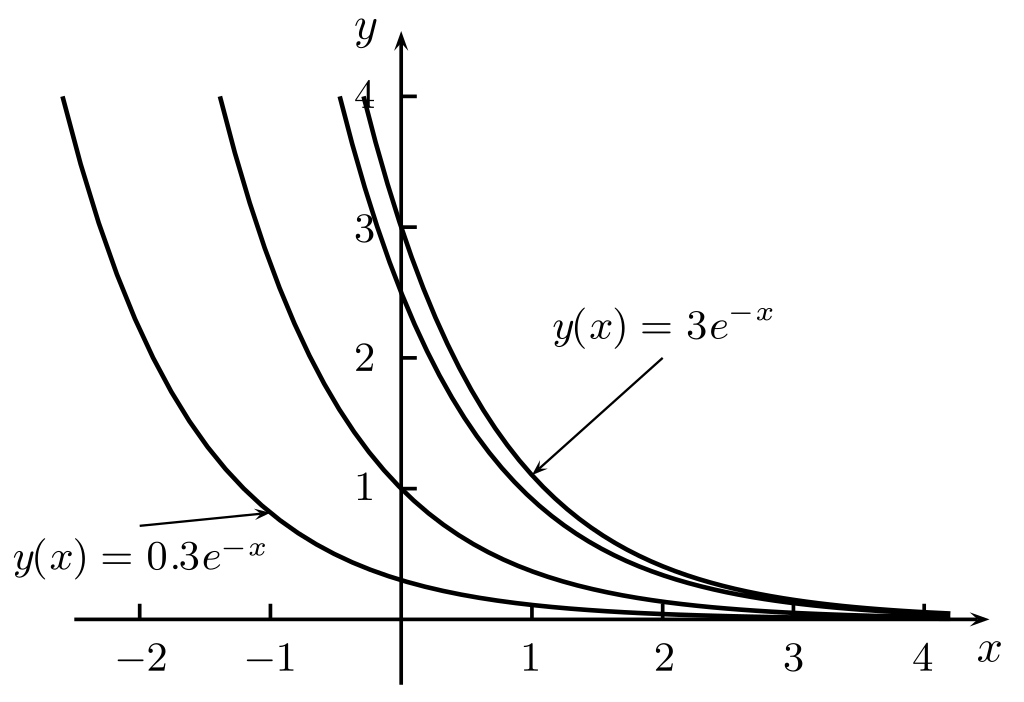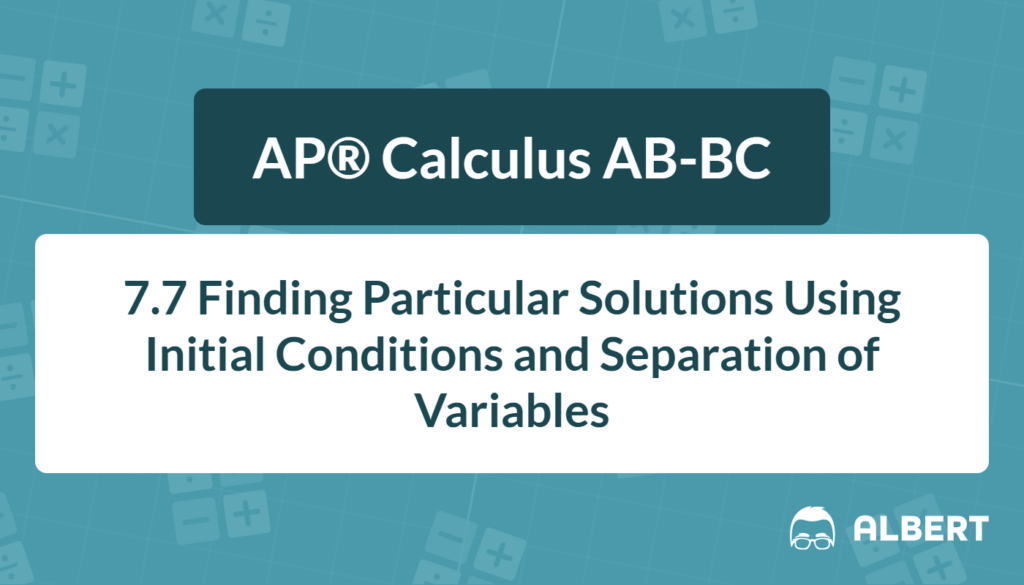A particular solution of differential equation is a specific solution that meets a given condition. This idea often appears in AP® Calculus AB-BC because it helps ensure the curve describing a system goes through a known point. In many real-world contexts, such as population growth or cooling processes, a general solution alone might not be enough. Therefore, finding a particular solution to a differential equation that satisfies initial conditions is essential for accurate modeling.
Understanding this topic begins with distinguishing between general and particular solutions. Once that becomes clear, it is easier to apply initial conditions and pin down the unique solution relevant to a given problem.
What We Review
General vs. Particular Solutions
Definitions and Distinctions
- General solution: This refers to the family of all possible solutions to a differential equation. Such a solution almost always contains an arbitrary constant C.
- Particular solution: This is the unique solution that satisfies a specific initial condition, often given as a point (x_0, y_0).
The image below shows multiple solutions to a differential equation. Each individual graph represents a particular solution to some differential equation.

Key Idea: Initial Conditions
A differential equation alone might have infinitely many solutions. However, the presence of an initial condition restricts the solution to a single path. By plugging a specific point into the general solution, it becomes possible to solve for the constant C and obtain the particular solution.
Example 1: Identifying General vs. Particular Solutions
Consider the differential equation \frac{dy}{dx} = 2x.
- Integrate both sides to find the general solution:
- y = \int 2x dx
- y = x^2 + C (where C is an arbitrary constant).
- Suppose the problem provides an initial point (2, 10).
- Plug x = 2 and y = 10 into the general solution:
- 10 = (2)^2 + C
- 10 = 4 + C
- C = 6.
- Plug x = 2 and y = 10 into the general solution:
- Therefore, the particular solution to the differential equation that passes through (2, 10) is:
- y = x^2 + 6.
This approach shows how an initial condition narrows the infinite family of solutions to just one function.
How to Find a Particular Solution
Step-by-Step Process
- Solve the differential equation to find the general solution.
- Apply the given initial condition to determine the constant(s).
- Confirm that the resulting function is indeed a solution to the original differential equation and that it passes through the specified point.
Example 2: Using Initial Conditions in a More Complex Case
Consider the differential equation \frac{dy}{dx} = 3x^2 - 4x.
- Integrate to find the general solution:
- y = \int (3x^2 - 4x) dx
- y = x^3 - 2x^2 + C.
- Use the initial condition y(1) = 0:
- Plug x = 1 into the general solution:
- 0 = (1)^3 - 2(1)^2 + C\rightarrow0 = 1 - 2 + C\rightarrowC = 1.
- Plug x = 1 into the general solution:
- Thus, the particular solution to this differential equation is:
- y = x^3 - 2x^2 + 1.
These steps illustrate how to find particular solutions systematically.
The Integral Form for Particular Solutions
Understanding F(x) = y_0 + \int f(t) dt
When \frac{dy}{dx} = f(x), integrating both sides yields y = \int f(x) dx + C. Another way to see this is to write the solution as F(x) = y_0 + \int_{a}^{x} f(t) dt, where y_0 is the value of y at some reference point x = a. Both forms lead to the same particular solution.
Example 3: Using the Integral Form
Consider the differential equation \frac{dy}{dx} = 2.
- Integrate:
- y = \int 2 dx
- y = 2x + C.
- If an initial condition is y(0) = 5, then:
- 5 = 2(0) + C
- C = 5.
- The particular solution is:
- y = 2x + 5.
Check it using the integral form:
- y = 5 + \int_{0}^{x} 2 dt = 5 + 2x.
Both methods match, confirming the result.
Domain Restrictions
Why Domain Matters
Some differential equations include functions like \ln|x| or \sqrt{x}, which require the solution to stay within a certain interval for the function to be valid. Therefore, the domain cannot always be all real numbers. The initial condition must lie within the appropriate interval to make sense.
Example 4: Demonstrating a Domain Restriction
Consider the differential equation \frac{dy}{dx} = \frac{1}{x}, where x \neq 0.
- Integrate to find the general solution:
- y = \int \frac{1}{x} dx
- y = \ln|x| + C.
- If the initial condition is on a positive x-value, say x = 2, then |x| = x, so the solution domain is x > 0. If y(2) = 3, then:
- 3 = \ln(2) + C
- C = 3 - \ln(2).
- The particular solution is:
- y = \ln(x) + 3 - \ln(2), valid for x > 0.
Hence, setting an initial condition on a positive x-value fixes the domain in this scenario.
Quick Reference Chart
| Term | Definition |
| Differential Equation | An equation involving an unknown function and its derivatives. |
| General Solution | The family of all solutions, typically expressed with an arbitrary constant C. |
| Particular Solution | A unique solution determined by applying an initial condition to the general form. |
| Initial Condition | A specific point (x_0, y_0) through which the solution curve must pass. |
| Domain | The set of x-values for which the solution is valid. |
Conclusion
In summary, a particular solution of differential equation is a critical concept for ensuring a function passes through a specified point. By distinguishing between the general form and the particular solution, one can easily use the initial condition to find the exact curve. Moreover, understanding domains makes it clear that certain solutions may only be valid in restricted intervals. These skills are vital in AP® Calculus AB-BC and beyond because they connect abstract mathematical techniques to real-world problems. Therefore, knowing how to find particular solution ensures accuracy in solving differential equations and interpreting results.
Sharpen Your Skills for AP® Calculus AB-BC
Are you preparing for the AP® Calculus exam? We’ve got you covered! Try our review articles designed to help you confidently tackle real-world math problems. You’ll find everything you need to succeed, from quick tips to detailed strategies. Start exploring now!
Need help preparing for your AP® Calculus AB-BC exam?
Albert has hundreds of AP® Calculus AB-BC practice questions, free responses, and an AP® Calculus AB-BC practice test to try out.








